The last Finnish submarine deployed in WW2 was another product Ingenieurskantoor voor Scheepsbouw den Haag which seeked to convince Finland to adopt a successor to the very small Saukko, larger and far more modern. Vesikko became esentially the prototype for the German Type II submarines. Six Type IIA submarines (U-1 to U-6) almost identical were built in the Deutsche Werke dock in Kiel and followed the Type IIB, IIC, and IID forming the bulk of coastal U-Boat force of Germany in WW2. Vesikko (“marder”). Built at Crichton-Vulcan, Finland had the primary purchase option until 1937, and the Finnish Government took her over in August 1934, then the Parliament approved the acquisition in 1936, and she joined the Finnish Navy, commissioned on 30 April 1934. She saw intense action until December 1944, survived the war and became a museum ship that can be visited today.
Like Saukko, Vesikko was a design ordered to the covert Dutch engineering company Ingenieurskantoor voor Scheepsbouw in 1930. She was to be officially a “commercial submarine” prototype for the Finns, but the biggest part of the R&D was financed by Germany as this was to be the prototype for the German Type II coastal submarines. The end product, still a coastal sub, larger than the tiny Saukko was purchased and construction ordered to Turku. Vesikko was launched on 10 May 1933 at Crichton-Vulcan dock, Turku. Until 1936 she was just named under the yard number CV 707.
Development
The rebirth of the German submarine industry after the ban on submarines imposed by the Versaille treaty triggered the creation of design office at the Hague in the Netherlands. Officially this engineering and design bureau was to provided plans and assistance for the construction of submarines to any interested power. Ingenieurskantoor voor Scheepsbouw (IVS) was initiated as a program from Admiral Paul Behncke in 1924. Engineers started working there in 1926 from WWI yard’s documentation on submersibles. This office was also financially backed by Vulkan Werft in Hamburg, but A.G.Weser/Krupp in Bremen and Germaniawerft/Krupp in Kiel and these activities were fully endrorse by the new government for the Reichsmarine. IvS started to market its 1925 “Inkavos” from Dr. Hans Techel, via the Istanbul naval attaché, leading to a first order from Turkey by the intermediary of Admiral Ernst von Gagern. The new submarines were built by Fijenoord.
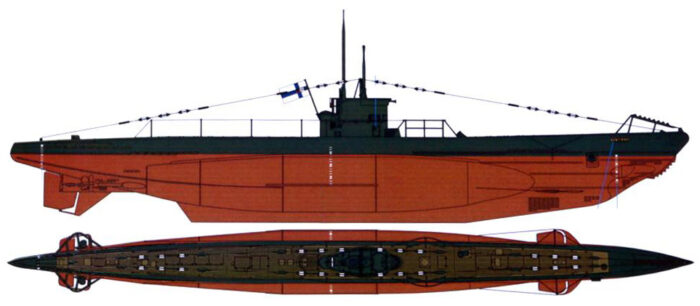
Vesikko at the end of her service in 1944
Ingenieurskantoor voor Scheepsbouw (IvS) as German front company promoted the construction of Vesikko to the Finnish government but there was no need for it and it was not planned. Instead this was part of a purely German developmental program. It was not part of a Finnish Naval Act unlike the Vetehinen class and Saukko, the latter intended for Lake Ladoga. Instead, Vesikko, largely funded by the Germans was part of the secret rebuilding of the Reichsmarine’s submarine arm. Officially it was still purchased by the Finns since the prototype needed testing under other colours. But the design, construction and trials were all supervised by the Reischmarine.
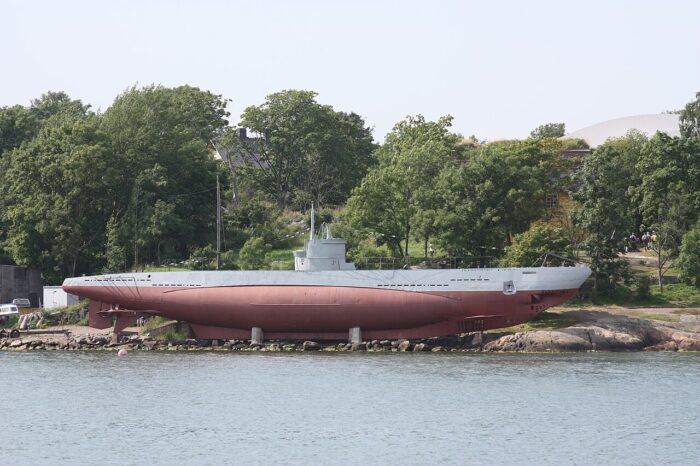
Like the Saukko which initially came from a precise Finnish requirement, which met a German requirement, the objective was to design a modern submarine type to be used in general mobilization and built quickly en masse. Technology and standards were to be brand new, not based on anyWorld War I design. Two prototypes were built: E1 in Spain and CV 707 in Finland. CV 707 was later chosen as a first submarine type for the new fleet. To coordinate effort between Berlin and Helsinki, Commander Karl Bartenbach, retired from active service of the Reichsmarine, worked as a civilian secret liaison officer in Finland as a “Naval Expert” of the Finnish Defence Forces. Under his leadership the 496-ton Vetehinen class and 100-ton Saukko were built in Finland, both important projects of IvS. Bartenbach’s mission was also to oversee development and construction of a 200–250 ton submarine. It was to be equal in combat effectiveness to the larger Vetehinen class but small, so the new program was callled the “Lilliput” Project.
The official decision to build Vesikko was made in 1930 after several meetings with the Finnish Government without any mention of Germany since the project broke the Versailles Peace Treaty terms. It was also decided this new sub could also be exported (and built in Turku, an interesting proposition for the Finns) to nations belonging to the League of Nations only. Would-be buyers would operate these submarines hands-free, without strings attached. The Finnish Government earned thus the primary rights to purchase the submarine and build it for export. It was, one the international market of the time, quite an interesting proposal as a very modern design, yet small, affordable, and the German design was not a mistery for anyone.
Construction of CV 707 started thus in 1931 at Crichton-Vulcan dock, Turku, now the largest Finnish yard and famously one which build high-end ships such as the largest cruise liners. At the time of her construction, CV 707 was probably among the world’s most advanced submarine designs, with a much stronger hull than usual for twice the operating depth of earlier German submarines or its contemporaries. Plus, the hull could be built completely by electric welding and in a modular way. Modules could be build anywhere and ferried by train to the assembly point also. Eliminating rivets increased resistance to water pressure and decreased oil leakages while making the construction process faster.
Its legacy was immense, as the Germans themselves tested CV 707 in the Archipelago of Turku in 1933–34. Vesikko became the prototype for the German Type II submarines in 1935. Six Type IIA submarines (U-1 to U-6) almost identical to Vesikko were built at the Deutsche Werke dock in Kiel after Hitler came to power, tearing down the Versailles treaty as announced, and afterwards, some forty-four Type IIB, IIC, and IID U-Boats were also built before and during World War II. They did not took part in the Atlantic campaign but still roamed the Baltic and North sea and made themselves useful. Also in 1939 they constituted the bulk of the German U-Boat arm before the Type VII took it over.
Design of the class

Hull and general design
Vesikko was based on a decision to cap down the U-Boat tonnage to 250 tonnes standards. So Vesikko’s displacement was 254 t (250 long tons) surfaced and 303 t (298 long tons) submerged for an overall lenght if 40.90 m (134 ft 2 in) o/a, so ten meters more than Saukko, and a short 26.10 m (85 ft 8 in) pressure hull. The
Beam was a full meter more than Saukko at 4.076 m (13 ft 4.5 in) including 4.026 m (13 ft 2.5 in) for the pressure hull, a total hull height fropm the teek to the top of the CT of Height 8.18 m (26 ft 10 in) and a draft of 3.79 m (12 ft 5 in) or 3.9 m in others sources. The pressure hull was made of 12-13 mm plates, the conning tower of 15 mm and the outer hull of 3 mm.
There was a wooden deck providing better grip, and she was divided into seven compartments with a single pressure bulkhead atarting at the aft housing and another end at the aft trim tank. A watertight bulkhead was located between the aft housing and Diesel, and the generator room. From the sternto the bow were located the aft trim tank inside the pressure hull, the aft men housing, diesel and generator room, galley and diving tanks, Central, Officer room and Forward torpedo room with extra berthing.
Her conning tower for typical of the U-Boat style with a rounded open bridge with wave breaker, two Two Carl Zeiss Nedinsco periscopes (observation and combat) and a platform aft for a 20 mm gun. There were diving planes fore and aft. The nose had teethed additions to cut through nets as customary of the time. The main ballasts were compartimented, and formed blisters alongside the presure hull. The bow was renforced to deal with ice, and there was a thicker plating at the waterline for the same reason.
She had a central main ballast tank 23.200 m3, a forward main ballast tank of 17.900 m3, and aft main ballast tank of 8.1 m3, a variable ballast tank of 6 m3, a forward trim tank of 1.91 m3, an aft trim tank of 1.83 m3. The Fuel tank had an internal volume of 11.15 m3 and the torpedo tank was 4.4 m3. There was also a single drinking water tank of 1.1 m3.
Complement was 4 officers, 8 non-commissioned officers, and 4 enlisted men.
Powerplant
Propulsion was performed by a Diesel-electric combination of 2 diesels rated for 350 PS (257 kW; 345 bhp) and two double-acting electric motors rated for 180 PS (132 kW; 178 shp) each. The 350 HP Motoren-Werke-Mannheim (MWM RS 127 S) Diesels were from Germany as were the 180 HP Siemens electric motors and the 62 cell battery group rated for 6,380 Ah total.
She was capable of 13 knots (24 km/h; 15 mph) surfaced, much better than Saukko, and 8 knots (15 km/h; 9.2 mph) submerged, making Vesikko the fastest small submarine for her category. She carried 9.6 tons of fuel for a Range 1500 miles at 10 knots surfaced or 1,350 nmi (2,500 km; 1,550 mi) at 8 knots surfaced, and 40 nmi (74 km; 46 mi) at 4 knots (7.4 km/h; 4.6 mph) submerged, or 50 miles.
Test depth was 150 m, making her the deepest diving small sub of the era, a crucial advantage to escape depht-charge attacks as her crush depth was calculated below 220 m.
Armament
Vesikko was armed with three 53.3 cm (21 in) torpedo tubes in the bow, all reloadable from the pressure hull, two on either side and one in the axis. Two more were stored in the torpedo rooms, three preloaded in rubes at each sorties for a total of 5 torpedoes. Again, these were coastal submarines, capable of a patrol of a week or so.
AA defence
This comprises a single 20 mm (0.79 in)/60 Madsen AA gun located on the forward deck. It was more intended for AA and close defence than offensive. There was a single 12.7 mm (1 in) machine gun located on the aft conning tower’s platform for AA defence.
Sensors
Vesikko was also well equipped with two groups of 6 Atlas Werke hydrophones, and a receiver station (Gruppenhorchgerät).

Vesikko in 1942

Vesikko in 1944
⚙ Vesikko class specs. |
|
| Displacement | 254 t/303t surfaced (standard), 381 tonnes submerged |
| Dimensions | 40.90 x 4.076 x 4.026 m (134 ft 2 in x 13 ft 4.5 in x 12 ft 5 in) |
| Propulsion | 2x Diesel-electric, 350 hp, EM 180hp |
| Speed | 13 knots () surfaced, 8 knots (15 km/h) submerged |
| Range | 1,350 nmi ()/10 knots surfaced, 40 nmi ()/4 knots submerged |
| Armament | 3 × 533 mm TTs, 20 mm/60, 12.7 mm HMG |
| Test depht | 150m () |
| Sensors (1942) | 2×6 Atlas Werke hydrophone, Gruppenhorchgerät |
| Crew | 16 men |
Vesikko in service

After the agreement Finnish Ministry of Defence and Crichton-Vulcan, Finland had a primary purchase option until 1937. The Finnish Government took over Vesikko officially on August 1934. The Finnish Parliament however only approved the acquisition in 1936, and she joined the Finnish Navy as Vesikko (“marder”).
In the Winter War she was deployed with Vesihiisi (Vetehinen class) to the Hanko region, on 30 November 1939 as Soviet surface combatants were headed there as reported. However she failed to arrive in time to intercept what was the cruiser Kirov and its escorts. She reached still her firing position but was not fast enough to get close and fire torpedoes on the cruiser. She also soon had to evade shellfire for her escorts.
From 17 December onwards, the Soviet battleship Oktyabrskaya Revolyutsiya sailed out to shell Finnish positions at Koivisto. This was a very tempting target and the Finnish Navy ordered Vesikko to hunt for her. But again, she the reached the area a day later, the next battleship Marat, in the same mission just already departed. It was winter, and under −15 °C (5 °F) Veikko stayed surfaced. Back home she was immobilized for the winter.
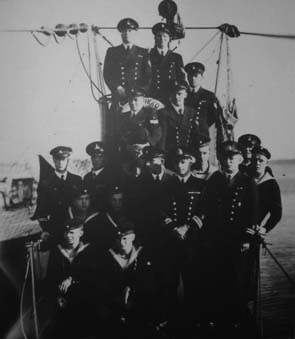
Crew of Vesikko (July 1941)
In the Continuation War, by the summer 1941, she was prepared for a few sorties, her crew back training, and made ready for combat operations. She was ordered to the staging area in the Gulf of Finland. Her forward operating base became Vahterpää island, near Loviisa. From 25 June, all Finish subs were ordered to patrol the eastern part of the Gulf of Finland and on 3 July 1941 Vesikko had her first kill: The Soviet merchant “Vyborg” east of Gogland. She was torpedoed almost point blank from 700 metres (770 yd), the first at at 13:25, hitting the stern, stopping her, and for good measure Vesikko fired another, a dud. Sill the same S/40 models seen on previous posts, notoriously unreliable. She was preparing to launch her third when three Soviet patrol boats arrived and started to depth charged her. When they believed she was away, they came to and assist the crippled cargo, but she would ultimately sink on 3 July at 14:15, showing that the eingle hit at the stern create steady, an still uncontrollable flooding. Soviet historiography completely changed the narrative, claiming it took a Luftwaffe attack and several submarines to sink her, with “over twenty torpedoes launched”.
Other sorties gave no results. Each time, she was not in the right position to fire, missed, or just spotted no target. By the fall 1941 Vesikko operated from Helsinki. With the winter coming, she only made three patrols to the coast of Estonia. In the spring of 1942, she came back in servoe modified, with a depth charge rack, and pressed as an escort for axis convoys in Åland, hunting suspected Soviet submarines near Helsinki when not in convoys.
By the start of June 1944, Vesikko escorted convoys evacuating troops from the Karelian Isthmus. The armistice between Finland and the Soviet Union constrained her to be back in port on 19 September and she sailed a last time in December 1944. She was commanded by Ltn. Kauko Pekkanen (1939), Capt. Ltn. Olavi Aittola (1940 and 1941), Capt. Ltn. Antti Leino (1942), Capt. Ltn. Pentti Airaksinen (1942), Capt. Ltn. Eero Pakkala (1943), Capt. Ltn. Olavi Syrjänen (1943), and Capt. Ltn. Lauri Parma (1944).
In January 1945, the Allies Peace commission by treaty ordered Finland to disarm its submarines. In 1947 according to the Paris Peace Treaty, the country was now forbidden to have any submarines and to the Vetehinen, Vesihiisi, Iku-Turso, Saukko were all sold for scrap to Belgium, and BU in 1953. Vesikko however was kept in the hope one day Finland could regain permission to use submarines. Disarmed, her tubes sealed, she was retained as a training sub (offcially) while being stored at the Valmet Oy dock, Helsinki’s Katajanokka district. She had been decommissioned on 15 December 1944 and by 1959, the Finnish Navy decided to sell her as the right to use submarines was not regained. Valmet Oy also complained her presence hampered work at the dock. The Institute of Military History and in 1962 concerted efforts of all Finnish submarine veterans managed to save her from being sold for BU.
She was transferred to Suomenlinna (on the shores of Artillery Bay), Susisaari island, near her previous base and underwent a long, costly restoration. However on Navy Day, 9 July 1973, she had been opened to the public. The restoration was complicated by the fact most of her internal equipment had been removed after the war and recycled elsewehere. She was almost an empty shell, and while staying for decades at Valmet Oy she housed homeless people and was vandalized. Enough donations and free voluntary work ensured the long restoration was completed. Many parts and equipments were traced down and purchase to “repopulate” her interior. Since, her appareance changed. At first she was painted with her 1942 camouflage, but now she is back in early overall grey. Snce no Type IIa U-Boat survived she is the only example of the type still around…
Read More
Books
Sopanen, Akseli (August 2019). “Itämeren pieni vaanija Sukellusvene Saukko alkuideoista poistoon saakka 1921–1953” (PDF). University of Eastern Finland.
Kijanen, Kalervo (1968). Suomen Laivasto 1918–1968 I [Finnish Navy 1918–1968, part I]. Helsinki: Meriupseeriyhdistys/Otava.
Kijanen, Kalervo (1968). Suomen Laivasto 1918–1968 II [Finnish Navy 1918–1968, part II]. Helsinki: Meriupseeriyhdistys/Otava.
“Хильде (1894)” (in Russian). Later in 1941 Hilde was sunk at Hanko.
Polmar, Norman; Noot, Jurrien (1991), Submarines of the Russian and Soviet Navies, 1718–1990: 1718–1990, NIP
Links
web.archive.org kotisivut.fonet.fi/
on navypedia.org/
web.archive.org/ vesikko.fi/
archive.ph/ dutchsubmarines.com/ export_ivs
on web.archive.org nk.oulu.fi/
web.archive.org UBoatVesikko#
on en.wikipedia.org/
commons.wikimedia.org Vesikko_(submarine,_1934)
commons.wikimedia.org/ Interior_of_Vesikko
uboat.net/boats/vesikko.htm
archive.ph dutchsubmarines.com /export_ivs.htm
Models
on scalemates.com
Finnish Navy 2, Fairy Kikaku No. S024 1:700: 3 subs pack

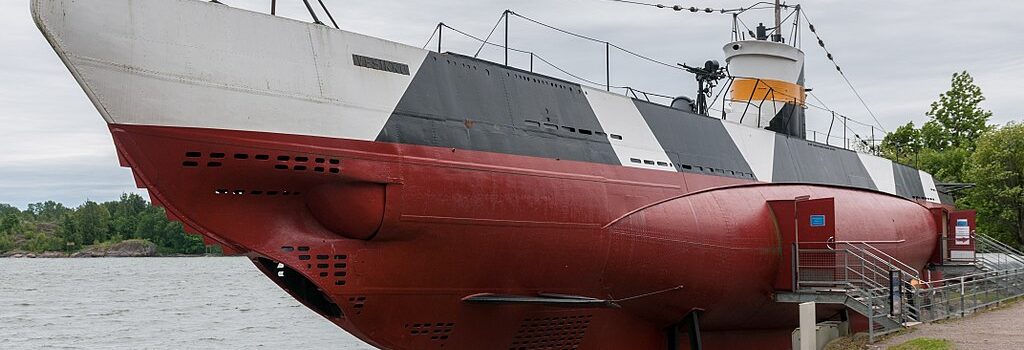

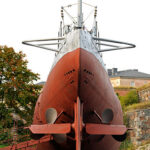
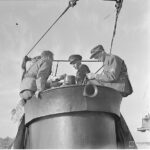
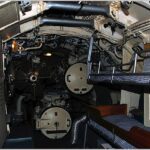
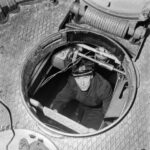
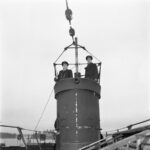
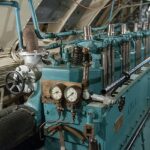
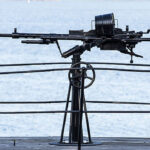
 Latest Facebook Entry -
Latest Facebook Entry -  X(Tweeter) Naval Encyclopedia's deck archive
X(Tweeter) Naval Encyclopedia's deck archive Instagram (@navalencyc)
Instagram (@navalencyc)





 French Navy
French Navy Royal Navy
Royal Navy Russian Navy
Russian Navy Armada Espanola
Armada Espanola Austrian Navy
Austrian Navy K.u.K. Kriegsmarine
K.u.K. Kriegsmarine Dansk Marine
Dansk Marine Nautiko Hellenon
Nautiko Hellenon Koninklije Marine 1870
Koninklije Marine 1870 Marinha do Brasil
Marinha do Brasil Osmanlı Donanması
Osmanlı Donanması Marina Do Peru
Marina Do Peru Marinha do Portugal
Marinha do Portugal Regia Marina 1870
Regia Marina 1870 Nihhon Kaigun 1870
Nihhon Kaigun 1870 Preußische Marine 1870
Preußische Marine 1870 Russkiy Flot 1870
Russkiy Flot 1870 Svenska marinen
Svenska marinen Søværnet
Søværnet Union Navy
Union Navy Confederate Navy
Confederate Navy Armada de Argentina
Armada de Argentina Imperial Chinese Navy
Imperial Chinese Navy Marinha do Portugal
Marinha do Portugal Mexico
Mexico Kaiserliche Marine
Kaiserliche Marine 1898 US Navy
1898 US Navy Sovietskiy Flot
Sovietskiy Flot Royal Canadian Navy
Royal Canadian Navy Royal Australian Navy
Royal Australian Navy RNZN Fleet
RNZN Fleet Chinese Navy 1937
Chinese Navy 1937 Kriegsmarine
Kriegsmarine Chilean Navy
Chilean Navy Danish Navy
Danish Navy Finnish Navy
Finnish Navy Hellenic Navy
Hellenic Navy Polish Navy
Polish Navy Romanian Navy
Romanian Navy Turkish Navy
Turkish Navy Royal Yugoslav Navy
Royal Yugoslav Navy Royal Thai Navy
Royal Thai Navy Minor Navies
Minor Navies Albania
Albania Austria
Austria Belgium
Belgium Columbia
Columbia Costa Rica
Costa Rica Cuba
Cuba Czechoslovakia
Czechoslovakia Dominican Republic
Dominican Republic Haiti
Haiti Hungary
Hungary Honduras
Honduras Estonia
Estonia Iceland
Iceland Eire
Eire Equador
Equador Iran
Iran Iraq
Iraq Latvia
Latvia Liberia
Liberia Lithuania
Lithuania Mandchukuo
Mandchukuo Morocco
Morocco Nicaragua
Nicaragua Persia
Persia San Salvador
San Salvador Sarawak
Sarawak Uruguay
Uruguay Venezuela
Venezuela Zanzibar
Zanzibar Warsaw Pact Navies
Warsaw Pact Navies Bulgaria
Bulgaria Hungary
Hungary

 Bundesmarine
Bundesmarine Dutch Navy
Dutch Navy Hellenic Navy
Hellenic Navy Marina Militare
Marina Militare Yugoslav Navy
Yugoslav Navy Chinese Navy
Chinese Navy Indian Navy
Indian Navy Indonesian Navy
Indonesian Navy JMSDF
JMSDF North Korean Navy
North Korean Navy Pakistani Navy
Pakistani Navy Philippines Navy
Philippines Navy ROKN
ROKN Rep. of Singapore Navy
Rep. of Singapore Navy Taiwanese Navy
Taiwanese Navy IDF Navy
IDF Navy Saudi Navy
Saudi Navy Royal New Zealand Navy
Royal New Zealand Navy Egyptian Navy
Egyptian Navy South African Navy
South African Navy






























 Ukrainian Navy
Ukrainian Navy dbodesign
dbodesign